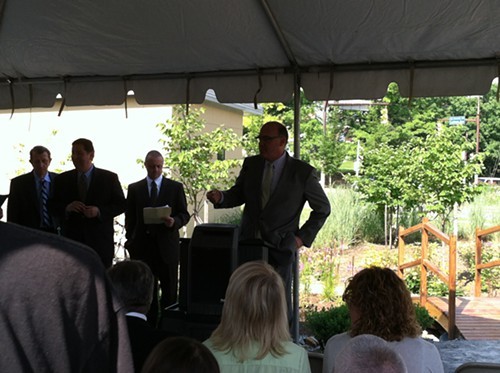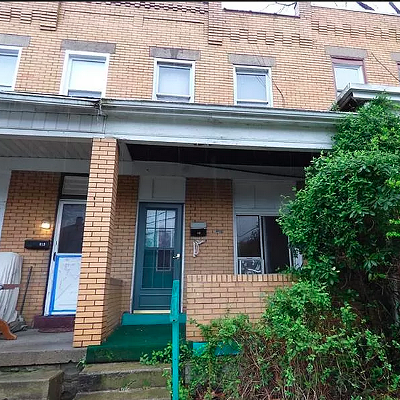Wednesday, July 31, 2013
PWSA submits feasibility study on storm-water management.
The Pittsburgh Water and Sewer Authority today submitted its Wet Weather Feasibility Study to the Department of Environmental Protection and Allegheny County Healthy Department.
The plan, according to agency leaders, will ultimately reduce combined sewer overflows — which occur when storm water and sewage overload the sewer systems and flow into waterways untreated. It also spells out efforts to bring the PWSA system into compliance with the Federal Clean Water Act and Pennsylvania Clean Streams Act. Alcosan has proposed its own plan to come into compliance with its own federal consent decree to reduce CSO.
And as part of the study, PWSA and city officials today touted many green infrastructure projects included in the proposal.
"This plan is our guidebook," said city councilor Bill Peduto, at a press conference held this morning in Larimer. "We have a blueprint to be able to take us through the combined sewer overflow project which is going to be the largest public works project of our time in this city, of our time on this earth, and gives us the pathway to make us a model of sustainability."
According to the PWSA, if the study is implemented as-is, combined sewer overflow volume and frequency could be reduced by 95%. The plan proposes a number of projects — touted as a "gray" and "green" investments. The gray investments — or infrastructure projects like storage tanks, pipes and screens for the CSO output, will average $3.8 million per year over the first 12 years and cost a total of $165 million over 20 years.
Proposed green projects include stream restoration of Saw Mill Run, mitigating run off on Route 19 and alleviating flooding on Route 51 and Edgebrook. And the agency says it will invest $2.5 million a year for the next four years for green infrastructure.
Jim Good, interim executive director, said that rates for PWSA customers would increase by about $100 a year in about 15 years to help fund the project in combination with private sector funding and foundation money. The study, which has been in the works since 2002, cost the agency $18 million, Good said.
"The thing about green is a lot of cities have done a little bit," Good said. "We're talking about doing a whole watershed."
Environmental groups praised the plan. In a statement, Jennifer Rafanan Kennedy, director of the Clean Rivers Campaign, said that “The public has made it clear that it wants to see a plan to deal with the region’s CSO problem that includes the community benefits that come from a green approach. With this plan PWSA has made it clear they are listening to the public and that they are leading the way toward a broad approach to our wet weather issues that makes wise use of our ratepayer dollars and provides considerable ancillary benefits.”










